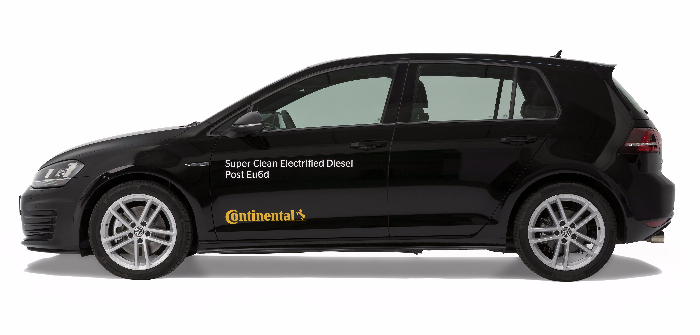Continental unveiled a number of clean diesel technologies at the Vienna Motor Symposium 2017. By making various modifications to a Euro 6 Diesel standard vehicle, engineers at Continental were able to reduce nitrogen oxide emissions by 60%.
Even in real-world testing on the road, over an extended temperature range, this keeps NOx emissions well below the legal limits. And while many other measures aimed at reducing pollutant emissions come at the expense of increased fuel consumption, with Continental’s technology CO2 emissions actually show a two percent fall. “The diesel engine will continue to play an important role in meeting mobility needs for the foreseeable future,” says José Avila, president of the Powertrain Division and member of the executive board of Continental. “So it is vital for us to develop the technology to support extremely low-pollutant diesel operation.”
The engineers implemented their clean diesel vision in several stages. They began by replacing the standard injection system with Continental’s PCRs5 piezo common rail injection system. This operates with maximum injection pressures of 2,500-bar. With the help of highly dynamic valve timing it is possible to perform multiple, very closely spaced and very precisely metered injections per cycle. In this way a minute amount of fuel can be injected into the cylinder after the combustion event. This fuel is ignited only when it reaches the catalyst, thereby accelerating catalyst warm-up. This has important implications because the SCR catalyst has to reach a certain minimum operating temperature before it can begin converting nitrogen oxide emissions. Tests show that this single measure – post-injection – can cut the SCR catalyst light-off time by around eight minutes, resulting in a reduction in cumulative nitrogen oxide emissions under the future WLTP (Worldwide harmonized Light-duty Test Procedure) driving cycle of 37%.
Among other measures a 48-volt hybrid system based on a belt-driven starter-alternator is also used. The electric motor, with a rated output of around 15 kW, not only allows braking energy to be recuperated and stored as electricity in a small lithium-ion battery but can also assist the internal combustion engine during short, sharp bursts of acceleration. This reduces the peaks in nitrogen oxide emissions that are a feature of diesel engines under very sudden, heavy throttle application. By cutting the relative proportion of accelerating power that has to be supplied by the combustion engine – something the engineers refer to as ‘phlegmatization’ – the 48-volt system can reduce nitrogen oxide emissions by a further three percent over and above the reduction achieved by post-injection. At the same time CO2 emissions are cut back by an additional three percent approximately.


